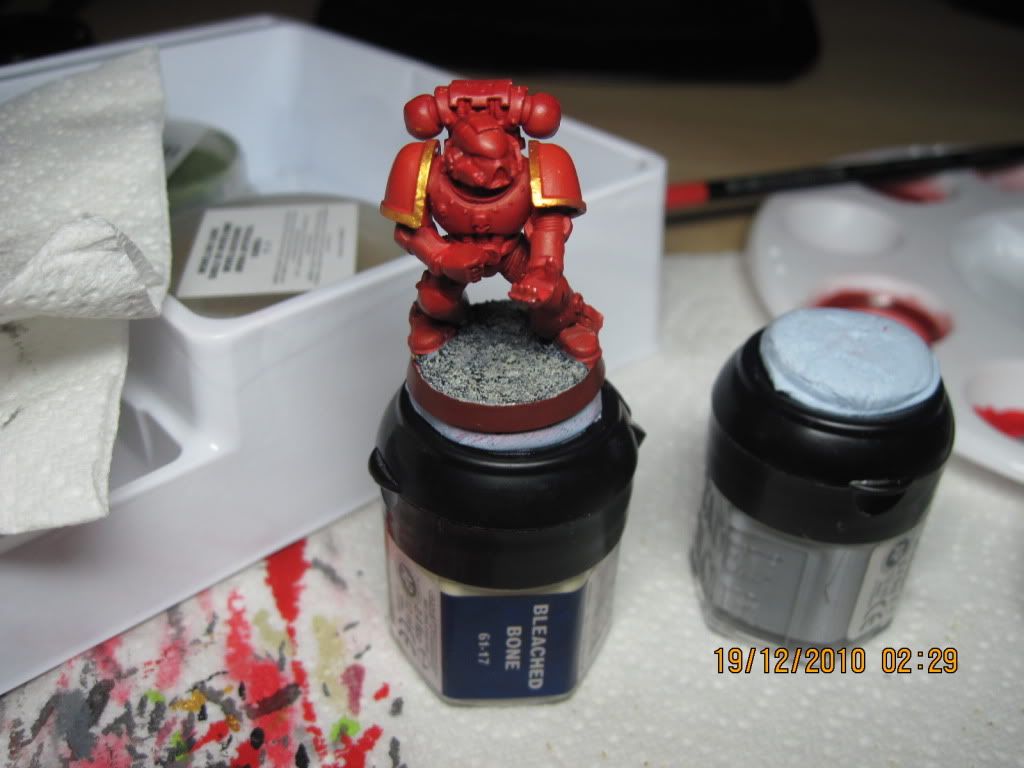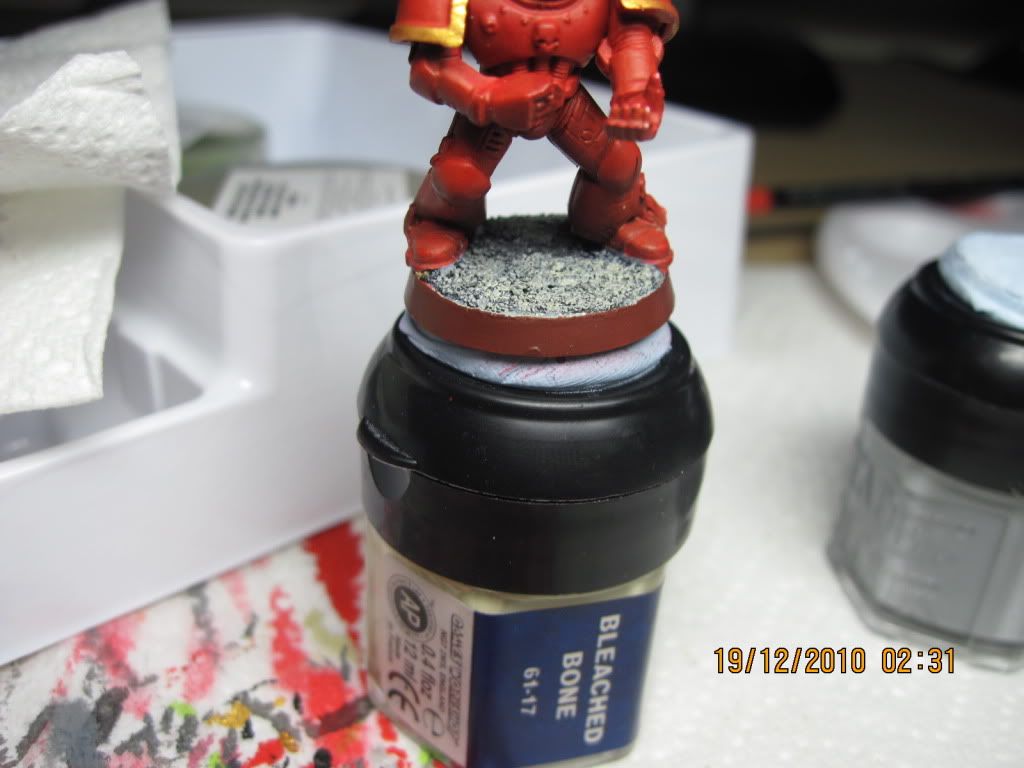Hey guys! The time has finally come for me to venture into bases. I've got a couple of space marines who were "sacrificed" to practice and so I can practice on basing with these. Nothing fancy, the goal is just basic bases that I see on codexes (codices?) and such.
So, what do I know about basing so far?
1. Local GW guys put the sand on the base before priming, they say it "locks" the sand to the base. I never understood that until now.
2. You can paint the base first, then glue on the sand/grass. This is good if you don't plan to coat the entire base with sand/grass (therefore some of the plastic base will show through)
3. You can apply the sand first, then coat them with paint
4. Most common technique advised (at least on the GW site) is drybrush/overbrush
A few questions to start off then:
a. How would you "lock" the sand if you didn't prime it with the mini? I'm currently trying this by applying a layer of watered-down PVC glue over the sand, but it's taking ages to dry so I am not sure if this is a success.
b. Any other techniques aside from drybrush/overbrush?
c. How do you get the grass to stand up? I think I read somewhere that you tap the base a certain way but I can't find that site/page/video now
d. The GW modelling sand seems too... fine. The rocks I see on pics seem to be bigger. Is that different sand or has the rocks just "settled" on my box?
Thanks guys! Yes, I'm probably over-analyzing this again, as Tommie would always say.
So, what do I know about basing so far?
1. Local GW guys put the sand on the base before priming, they say it "locks" the sand to the base. I never understood that until now.
2. You can paint the base first, then glue on the sand/grass. This is good if you don't plan to coat the entire base with sand/grass (therefore some of the plastic base will show through)
3. You can apply the sand first, then coat them with paint
4. Most common technique advised (at least on the GW site) is drybrush/overbrush
A few questions to start off then:
a. How would you "lock" the sand if you didn't prime it with the mini? I'm currently trying this by applying a layer of watered-down PVC glue over the sand, but it's taking ages to dry so I am not sure if this is a success.
b. Any other techniques aside from drybrush/overbrush?
c. How do you get the grass to stand up? I think I read somewhere that you tap the base a certain way but I can't find that site/page/video now
d. The GW modelling sand seems too... fine. The rocks I see on pics seem to be bigger. Is that different sand or has the rocks just "settled" on my box?
Thanks guys! Yes, I'm probably over-analyzing this again, as Tommie would always say.



